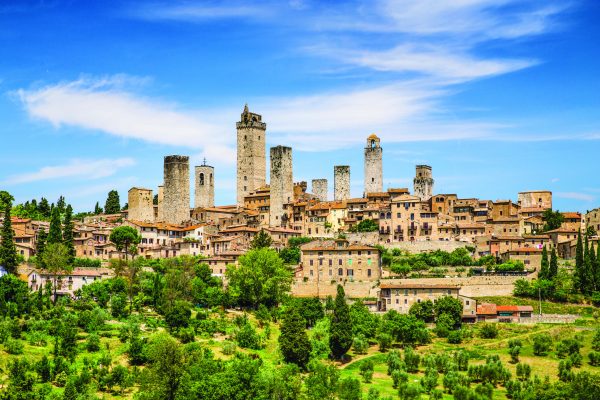Discover the historical centre of San Gimignano and how its downfall became its architectural saviour.

Midway between Siena and Florence stand the towers of San Gimignano, no modern city skyline but a sight largely unchanged since the medieval era. Taking advantage of their hilltop elevation, the wealthiest San Gimignano families fortified their palaces with a total of 72 imposing skyscrapers, not only to provide protection from unsavoury visitors but also to stand as an outward symbol of their wealth and power.
Although only 14 towers remain, the piazzas, cobbled streets, archways, palaces and fountains of this UNESCO-inscribed city serve as a time capsule of urban medieval life. Treasured and celebrated works of art remain in their original architectural settings, including Memmo di Filippuccio’s frescoes on the walls of Palazzo del Popolo, offering an intimate glimpse into 14th-century life.
Piazza della Cisterna, named after the well that still stands in the square, was the hub for gathering pilgrims 1,000 years ago, and still remains abuzz with tourists echoing the footsteps of those past travellers. The imposing medieval city gate still witnesses a daily ebb and flow of visitors.
The city was prosperous until 1348, when a devastating plague set in motion centuries of decline as Florentine politics gradually stripped San Gimignano of its wealth and status. Yet this is what preserved it: impoverished San Gimignano escaped the influence of fashion and architectural innovation that might have razed all these soaring constructions to the ground. To step within these walls is to travel back in time.
Liked this article? Discover more like it in our archive.
